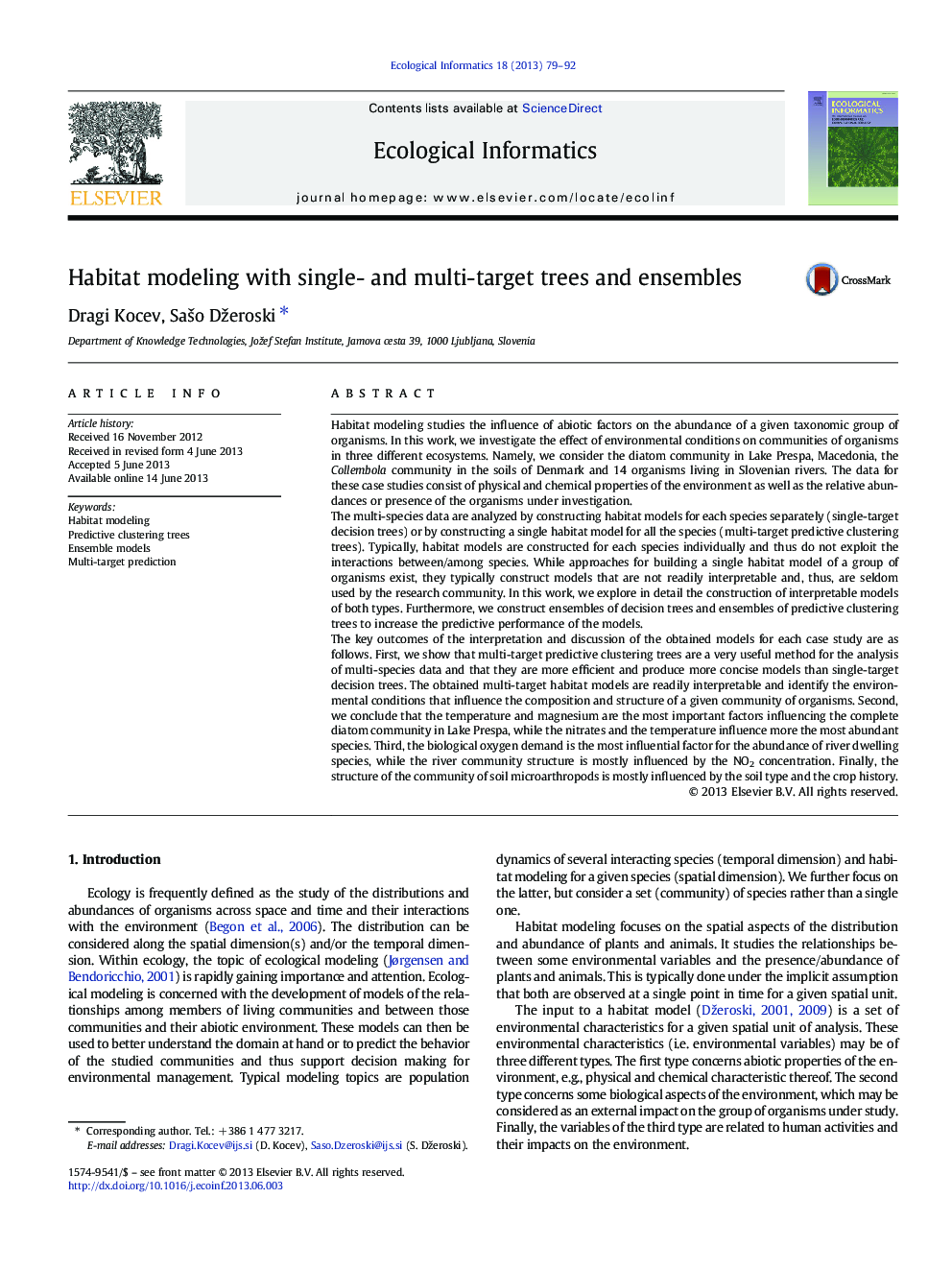| کد مقاله | کد نشریه | سال انتشار | مقاله انگلیسی | نسخه تمام متن |
|---|---|---|---|---|
| 4374932 | 1617214 | 2013 | 14 صفحه PDF | دانلود رایگان |

• We relate environmental physico-chemical properties to community structure.
• We model diatom (lake), bioindicator (river) and Collembola (soil) communities.
• We construct tree-based single-target and multi-target habitat models.
• The constructed multi-target habitat models have high expressive power.
• The multi-target models provide knowledge about the community structure.
Habitat modeling studies the influence of abiotic factors on the abundance of a given taxonomic group of organisms. In this work, we investigate the effect of environmental conditions on communities of organisms in three different ecosystems. Namely, we consider the diatom community in Lake Prespa, Macedonia, the Collembola community in the soils of Denmark and 14 organisms living in Slovenian rivers. The data for these case studies consist of physical and chemical properties of the environment as well as the relative abundances or presence of the organisms under investigation.The multi-species data are analyzed by constructing habitat models for each species separately (single-target decision trees) or by constructing a single habitat model for all the species (multi-target predictive clustering trees). Typically, habitat models are constructed for each species individually and thus do not exploit the interactions between/among species. While approaches for building a single habitat model of a group of organisms exist, they typically construct models that are not readily interpretable and, thus, are seldom used by the research community. In this work, we explore in detail the construction of interpretable models of both types. Furthermore, we construct ensembles of decision trees and ensembles of predictive clustering trees to increase the predictive performance of the models.The key outcomes of the interpretation and discussion of the obtained models for each case study are as follows. First, we show that multi-target predictive clustering trees are a very useful method for the analysis of multi-species data and that they are more efficient and produce more concise models than single-target decision trees. The obtained multi-target habitat models are readily interpretable and identify the environmental conditions that influence the composition and structure of a given community of organisms. Second, we conclude that the temperature and magnesium are the most important factors influencing the complete diatom community in Lake Prespa, while the nitrates and the temperature influence more the most abundant species. Third, the biological oxygen demand is the most influential factor for the abundance of river dwelling species, while the river community structure is mostly influenced by the NO2 concentration. Finally, the structure of the community of soil microarthropods is mostly influenced by the soil type and the crop history.
Journal: Ecological Informatics - Volume 18, November 2013, Pages 79–92